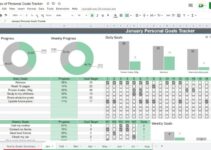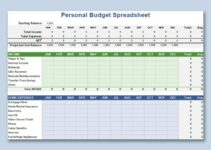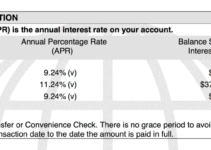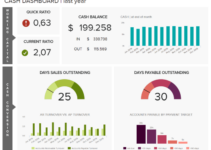Welcome to Blog Personal Finance 2024, where we embark on a journey to empower you with the knowledge and strategies to master your financial well-being. In this rapidly evolving digital landscape, we delve into the latest trends, explore emerging topics, and provide practical guidance tailored to your specific needs.
Join us as we navigate the complexities of personal finance together.
Our mission is to provide you with valuable and engaging content that resonates with your financial aspirations. We believe that personal finance should be accessible, understandable, and empowering. Whether you’re a seasoned investor or just starting your financial journey, we’re here to guide you every step of the way.
Blog Niche: Personal Finance
Personal finance blogging in 2024 will continue to focus on providing practical guidance and actionable advice to individuals seeking to improve their financial well-being. With the ongoing economic uncertainties and evolving financial landscapes, there is an increasing demand for accessible and reliable information on managing personal finances effectively.
Emerging trends within the niche include a growing emphasis on financial literacy, responsible investing, and personalized financial planning. As individuals become more aware of the importance of financial well-being, they are seeking comprehensive resources that empower them to make informed decisions about their money.
Target Audience Demographics and Interests
The target audience for personal finance blogs encompasses individuals from diverse backgrounds and financial situations. They typically share a common desire to improve their financial knowledge, achieve financial stability, and plan for the future. The audience can be segmented based on factors such as age, income level, and investment goals.
- Millennials and Gen Z: These generations are entering the workforce and seeking guidance on managing their finances, including budgeting, saving, and investing.
- Families and Individuals with Children: This audience is concerned with financial planning for their children’s education, healthcare, and future financial security.
- Retirees and Pre-Retirees: This audience is focused on retirement planning, managing retirement income, and preserving their wealth.
- Individuals with Specific Financial Goals: This segment includes those seeking advice on specific financial topics, such as buying a home, paying off debt, or saving for a major purchase.
Content Strategy

Creating valuable and engaging content is crucial for a successful personal finance blog in 2024. By providing high-quality information that resonates with your audience, you can establish yourself as a trusted authority and attract a loyal readership.
To develop an effective content strategy, consider the following tips:
Content Calendar
- Plan your content in advance using a content calendar to ensure regular and consistent publishing.
- Identify key topics and themes that align with your target audience’s interests and financial goals.
- Schedule a mix of evergreen content (timeless information) and timely articles that address current financial events or trends.
Search Engine Optimization ()
- Optimize your content for search engines by incorporating relevant s and phrases.
- Use descriptive and engaging headlines and meta descriptions to entice readers and improve click-through rates.
- Structure your content using headings, subheadings, and bullet points for improved readability and visibility.
Storytelling and Data
- Use storytelling to connect with your readers on an emotional level and make financial concepts relatable.
- Share personal anecdotes or case studies to illustrate financial principles and provide real-world examples.
- Incorporate data and statistics to support your claims and enhance the credibility of your content.
Content Formats

Personal finance content can take various formats, each with its own advantages and target audience. The most common formats include:
- Articles:Written content that provides in-depth information on personal finance topics. They are suitable for educating readers and building authority.
- Videos:Engaging and visually appealing content that can simplify complex topics and reach a wider audience.
- Infographics:Data-driven visuals that present information concisely and visually.
- Podcasts:Audio-based content that allows for in-depth discussions and interviews.
Successful personal finance blogs often utilize a combination of formats to cater to different preferences and learning styles.
Examples of Successful Personal Finance Blogs
- The Balance:Comprehensive articles and videos covering a wide range of personal finance topics.
- NerdWallet:Interactive tools and calculators alongside informative articles and infographics.
- Dough Roller:Podcast interviews and webinars with experts, providing practical financial advice.
- Money Under 30:Videos and articles aimed at younger adults navigating personal finance.
Best Practices for Creating Visually Appealing and Shareable Content, Blog Personal Finance 2024
To create content that is both visually appealing and shareable, consider the following best practices:
- Use high-quality images and videos:Visuals can enhance the reader’s experience and make content more engaging.
- Design visually appealing infographics:Infographics should be clear, concise, and visually appealing to effectively convey information.
- Keep videos concise and informative:Videos should be engaging and provide value to the viewer, without being too long.
- Use social media optimization:Optimize content for social media platforms by using relevant hashtags and shareable formats.
Monetization Strategies

Building a personal finance blog can be a rewarding endeavor, not only in terms of sharing valuable information but also in terms of generating income. Here are some effective monetization strategies to consider:
Affiliate Marketing
Affiliate marketing involves partnering with brands and promoting their products or services on your blog. When your readers click on your affiliate links and make a purchase, you earn a commission. This is a popular way to monetize personal finance blogs as it allows you to earn passive income from recommending products and services that you genuinely believe in.
Sponsored Content
Sponsored content is a form of paid partnership where brands pay you to create and publish content that aligns with your blog’s niche and audience. This content could be a blog post, a video, or a social media post. Sponsored content can be a lucrative revenue stream, but it’s important to ensure that the content is authentic and valuable to your readers.
Online Courses
If you have expertise in a particular area of personal finance, consider creating and selling online courses. This is a great way to share your knowledge with a wider audience and generate a recurring revenue stream. You can host your courses on platforms like Udemy or Coursera, or create your own website to sell them.
Design and User Experience
Creating a visually appealing and user-friendly blog is crucial for attracting and retaining readers. A well-designed blog enhances the user experience, making it easier for visitors to navigate, find information, and engage with your content.
Here are some tips to optimize your blog’s design and user experience:
Navigation
- Use clear and concise menu options.
- Ensure easy access to important pages.
- Consider using a sticky navigation bar.
Layout
- Use a visually appealing layout that is easy to read and scan.
- Break up text with headings, subheadings, and bullet points.
- Use white space effectively to improve readability.
Mobile Responsiveness
With the majority of internet users accessing websites on mobile devices, it’s essential to ensure your blog is mobile-responsive. This means it should adjust automatically to different screen sizes, providing an optimal experience for all users.
White Space, Typography, and Color Palettes
- Use white space to create a sense of spaciousness and improve readability.
- Choose a readable font and font size.
- Use a consistent color palette that aligns with your brand identity.
Social Media Integration
In the realm of personal finance, social media has emerged as a powerful tool for connecting with potential readers, establishing authority, and promoting your blog.
Building a strong social media presence involves:
- Selecting the right platforms:Identify platforms where your target audience is most active.
- Creating engaging content:Share valuable insights, practical tips, and relatable stories that resonate with your audience.
- Optimizing profiles:Craft compelling bios, use relevant s, and include links to your blog.
- Establishing a posting schedule:Plan and schedule regular posts to maintain a consistent presence.
Social Media for Engagement, Lead Generation, and Customer Support
Social media is not merely a broadcasting tool; it’s an avenue for engagement and building relationships.
- Respond to comments and messages:Engage with followers, answer questions, and provide support.
- Run contests and giveaways:Generate excitement and attract new followers.
- Utilize social media advertising:Target specific demographics and interests to reach a wider audience.
- Provide customer support:Offer assistance and resolve queries through social media channels.
Building a Community: Blog Personal Finance 2024
Fostering a community around a personal finance blog offers numerous benefits, including increased engagement, loyalty, and brand awareness. Here’s how to build a thriving community:
Create Online Forums:Establish dedicated online spaces where readers can connect, ask questions, and share experiences. Forums facilitate discussions and foster a sense of belonging.
Hosting Webinars
Host webinars to provide valuable insights, educate readers, and answer their questions in real-time. Webinars build relationships, establish authority, and expand the blog’s reach.
Organizing Meetups
Organize in-person meetups to connect with readers face-to-face. These events create a sense of community, strengthen bonds, and provide opportunities for networking and collaboration.
Engaging with Readers
Actively engage with readers through comments, social media, and email. Respond to queries, acknowledge feedback, and share exclusive content to build relationships and foster loyalty.
Ethical Considerations
Personal finance bloggers have a significant responsibility to their readers. They must provide accurate and unbiased information, avoid conflicts of interest, and protect reader privacy.
One of the most important ethical considerations for personal finance bloggers is avoiding conflicts of interest. This means not accepting compensation or gifts from companies or individuals that could influence their recommendations. Bloggers should also disclose any sponsored content or affiliate relationships they have.
Protecting Reader Privacy
Another important ethical consideration is protecting reader privacy. Bloggers should never share personal information about their readers without their consent. They should also use secure methods to collect and store reader data.
Examples of Ethical Practices
There are many examples of ethical practices in the personal finance blogging industry. Some bloggers have adopted the “no freebies” policy, which means they do not accept any compensation or gifts from companies or individuals. Other bloggers have created clear disclosure policies that Artikel their relationships with sponsors and affiliates.
Last Word
As we conclude our exploration of Blog Personal Finance 2024, we hope you’ve gained invaluable insights and actionable strategies to transform your financial future. Remember, financial empowerment is a continuous process, and we encourage you to stay engaged with our community, share your experiences, and continue learning.
Together, we can achieve financial freedom and live our best financial lives.
Questions Often Asked
What is the target audience for Blog Personal Finance 2024?
Our target audience encompasses individuals at all stages of their financial journey, from those just starting out to experienced investors seeking to optimize their strategies. We cater to those eager to improve their financial literacy, make informed decisions, and achieve their financial goals.
How often will new content be published on Blog Personal Finance 2024?
We are committed to providing you with regular and timely updates. Our content calendar ensures a consistent flow of fresh articles, videos, infographics, and podcasts, keeping you informed on the latest trends and empowering you to make informed financial choices.
Can I ask questions or interact with the community on Blog Personal Finance 2024?
Absolutely! We encourage active participation and engagement within our community. You can leave comments on our blog posts, join our online forums, attend webinars, and connect with us on social media. We value your insights and strive to create a supportive and interactive environment.








